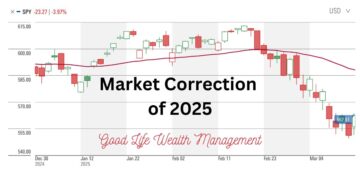A 2013 study from Prudential considered whether a hypothetical 65-year old female retiree would have enough retirement income to last her lifetime. In their scenario, they calculated a 21% possibility of failure, given market volatility and longevity risk. When they added in a third factor of “an extended period of low interest rates”, the failure rate rose to 54%.
Unfortunately for today’s new and soon-to-be retirees, low interest rates may be here to stay. In spite of the Federal Reserve raising the Fed Funds rate 0.25% in December, it’s not at all clear that the economy will be strong enough in 2016 for regulators to continue to increase interest rates as anticipated.
Low rates help borrowers, such as home buyers, corporations, or governments, but hurt savers, investors, and especially retirees who live off their nest egg. While the immediate consequences of low interest rates are pretty obvious, there are long-term issues that are even more significant for people who are close to retirement or who recently retired.
- By lowering interest rates, governments make holding cash less attractive and encourage investors to invest elsewhere. You can’t live off CDs when the interest rates are 0-1%. My recommendation for your “safe money”: Ladder 5-year Fixed Annuities for a better rate.
- Lower expected returns from bonds would suggest higher allocations to equities, but the challenge for retirement income planning is that increasing equities also increases volatility. Equity heavy portfolios have a greater chance of running out of money if there’s an extended bear market. The reality is that low interest rates means we probably need a lower withdrawal rate to be safe.
- When you delay receiving Social Security benefits from age 66 to age 70, you will receive an increase of 8% per year, or 32% if you wait the full four years. I don’t know of any other investment that has a guaranteed 8% return, so it may make sense to spend your cash, CDs, and other low-return fixed income in your 60’s to get higher Social Security benefits at age 70. If you are concerned about the possibility of outliving your money, waiting for a larger benefit is a good idea. The lower the interest rates available, the more valuable the 8% deferral rate from Social Security.
- Today we have low returns with average or above risk, which is worse for a retiree taking withdrawals than for a young person who can at least dollar cost average during volatile times. Focus on diversifying your sources of retirement income (Social Security, pensions, annuities, wages, and portfolio withdrawals), and if possible, aim to cover your basic expenses from guaranteed sources of income.








1 Comment
Comments are closed.